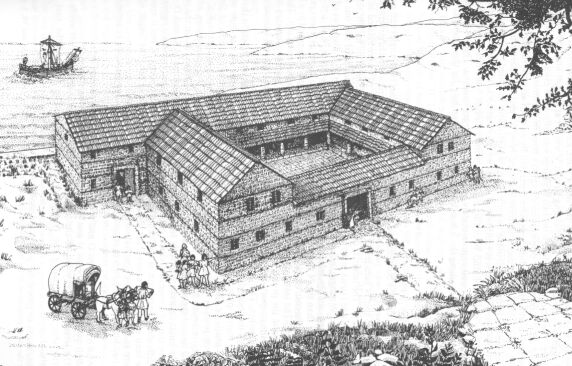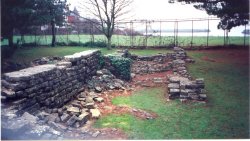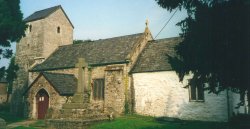Barry's History 1
Barry's earliest residents have recenty been confirmed as dinosaurs. In 2021, a well-preserved dinosaur footprint was discovered at Bendricks Bay. The 220 million years old footprint had been preserved in mud. It is impossible to tell what type of dinosaur left it, but the print is 10cm long and likely from a 75cm tall dinosaur.
Barry, as we know it today, only really began to grow with the building of the docks in 1884. However, people had been living in this part of South Wales
since long before that. The encroachment of the sea to form what is now the Bristol Channel happened about 6500 years ago in the
Mesolithic (Middle Stone Age) period. Preserved trees and peat deposits were found during the construction of Barry Docks belonging to
this period. Barry's history can be traced back to the time of the first farmers of the Neolithic (New Stone Age) period. Several fine
polished axe-heads of this era have been found near Barry.
Bronze Age burial mounds and cremation of Beaker folk have been found at Cold Knap and Friars Point. Iron Age hill fort settlements
are also in evidence, especially at the Bulwarks at Porthkerry. A possible Early Iron Age farmstead dating from the 4th century BC was
discovered during the construction of the College of FE off Colcot Road.
 In later
years the Romans took an interest in the area. Although the Roman invasion of Britain began in A.D. 43 under the Emperor Claudius, it
was not until A.D. 55-60 AD that the 20th Legion began to capture the territory of the Silures of SE Wales. Evidence for Roman
occupation in Barry has been observed at both St. Baruc's Chapel and St. Nicholas' Church, where re-used Roman tiles and bricks were
incorporated into the fabric of both buildings. At the Knap they built what is thought to have been a large Naval base and supply depot
for their Bristol Channel Fleet which may be unique in Roman Wales, perhaps in Britain. It seems to have been erected towards the end of
the 3rd century A.D.
In later
years the Romans took an interest in the area. Although the Roman invasion of Britain began in A.D. 43 under the Emperor Claudius, it
was not until A.D. 55-60 AD that the 20th Legion began to capture the territory of the Silures of SE Wales. Evidence for Roman
occupation in Barry has been observed at both St. Baruc's Chapel and St. Nicholas' Church, where re-used Roman tiles and bricks were
incorporated into the fabric of both buildings. At the Knap they built what is thought to have been a large Naval base and supply depot
for their Bristol Channel Fleet which may be unique in Roman Wales, perhaps in Britain. It seems to have been erected towards the end of
the 3rd century A.D.

The name of Barry derives from St. Baruc , who lived on the Island in pre-Norman times and was drowned in the Bristol Channel. A
church was built on a headland above the harbour that became a shrine containing his remains. In the 12th century , the church was moved
and rebuilding continued until the 14th century. It remained in use until after 1558 but was a ruin by 1700. The ruins can be seen just
to the south of Redbrink Road.

Cadoxton, too, takes its name from an early saint, St. Cadoc, and it is around the medieval church of St. Cadoc that the old village
grew up. The church still survives, as do some of the older village houses.